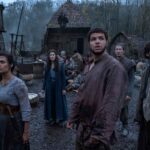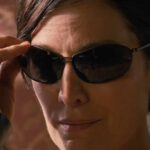Even though Avengers: Endgame was a fairly character-driven piece, with only the final 20 minute battle being the major set-piece, it was still a visual effects heavy picture. Over a dozen VFX companies from Industrial Light & Magic (ILM) to Cantina Creative to Perception to Digital Domain were involved in creating the movie’s nearly 2,500 VFX shots. And the 3-hour run time and slow pace of Endgame meant that scenes ran longer, increasing the complexity of the visual effects. VFX Supervisor Dan Deleeuw opened up about the VFX process for Endgame and talked about the challenges of achieving different kinds of effects that the movie demanded.
One of the more prominent effects, thanks to the movie’s time-travel plot, was the aging and de-aging of characters. In essence, it’s something Marvel Studios had been preparing for quite a while, starting as early as Captain America: The Winter Soldier when they aged Peggy Carter to look over 100 years and de-aged Michael Douglas in Ant-Man to make him look younger. In this case they needed The Winter Soldier approach to make Captain America look older in the final minutes of the movie.
It was something that we knew at the end of the film we’d have old Cap which was kind of fun to see and do because it’s from the comics. That was a combination of practical makeup – we had put some makeup on his neck that kinda gave us the loose skin – and then tried to do some work around the eyes but that came off a little bit stiff. But then knowing the majority of the work would be done in visual effects, we were doing the forehead, the face the cheeks areas around the eyes.
The makeup wasn’t as convincing as the filmmakers had hoped it would be, forcing them to go largely digital. The Russos had indicated in a previous Q & A that over 95% of Cap’s old look was CGI, with 5% coming from makeup. Marvel once again employed the services of Lola, the VFX company responsible for most of the digital de-aging effects as well as the skinny Steve from Captain America: The First Avenger. DeLeeuw talked about how that process came to be.
The trick with that was you work with Lola and when you shoot it you shoot it with Chris Evans, and then you have an older-age double. You have them run the scene watching Chris running the scene the same way. And so, when you have Chris’s performance and kind of a reference for the older skin, you’re able to basically marry [and] take the texture from the older skin and apply it to Chris Evans with some combination of CG and painting mixed in. The most important thing is perserving Chris Evans’ performance. If you start incorporating too much of the older skin is not Chris Evans anymore.
There’s quite a fine line between too much CG and too less and often it’s walking a tight rope to get the effect just right. In this case, as Deleeuw explained, it was about ensuring the performance that came across was 100% Chris Evans or else the entire effect would’ve fallen flat. Which is why they didn’t go for a full-CG model, wherein the effect would’ve been achieved by recreating a real performance and mapping it on to the model. The more CG is used in this case though, the more the scene drifts into the uncanny valley, throwing the illusion away, leading them to overlay Chris Evans’s performance with the skin textures from an old man recreating the scene for a seamless effect.
The other side to it was digitally de-aging characters as necessitated by the time travel. DeLeeuw revealed how they de-aged not just the more obvious candidates such as Michael Douglas and John Slattery, but also the original six Avengers as they revisited the Battle of New York.
When we were back to New York, we did some work on the Avengers, the big six so they would match with their counterparts in the first Avengers movie. A lot of times when you do de-aging you kinda scour the net trying to find reference but in this case we had reference to the very movie we were matching them to.
With Michael Douglas it was another great situation to be in because Michael Douglas’ career spans Romancing The Stone and all these amazing movies so you can go in and say what Michael Douglas do we want. And so I was talking to Joe Russo and I asked ‘Do you want Romancing The Stone Michael Douglas? Or do you want The China Syndrome Michael Douglas? Or do you want Streets of San Francisco Michael Douglas?’ And he was like [excitedly] Streets of San Francisco … And we went back and found Streets of San Francisco and that’s the Michael Douglas we matched for when we se him in the lab.
Subsequently, he talked about the digital advances in the last few years that made this kind of storytelling and the use of such tools possible. The entire podcast is a riveting listen that covers some other aspects of the Visual Effects process involved in Endgame as well. Check it out through the source link below.
Avengers: Endgame is currently running in theaters now. Check out our movie review on Appocalypse.





